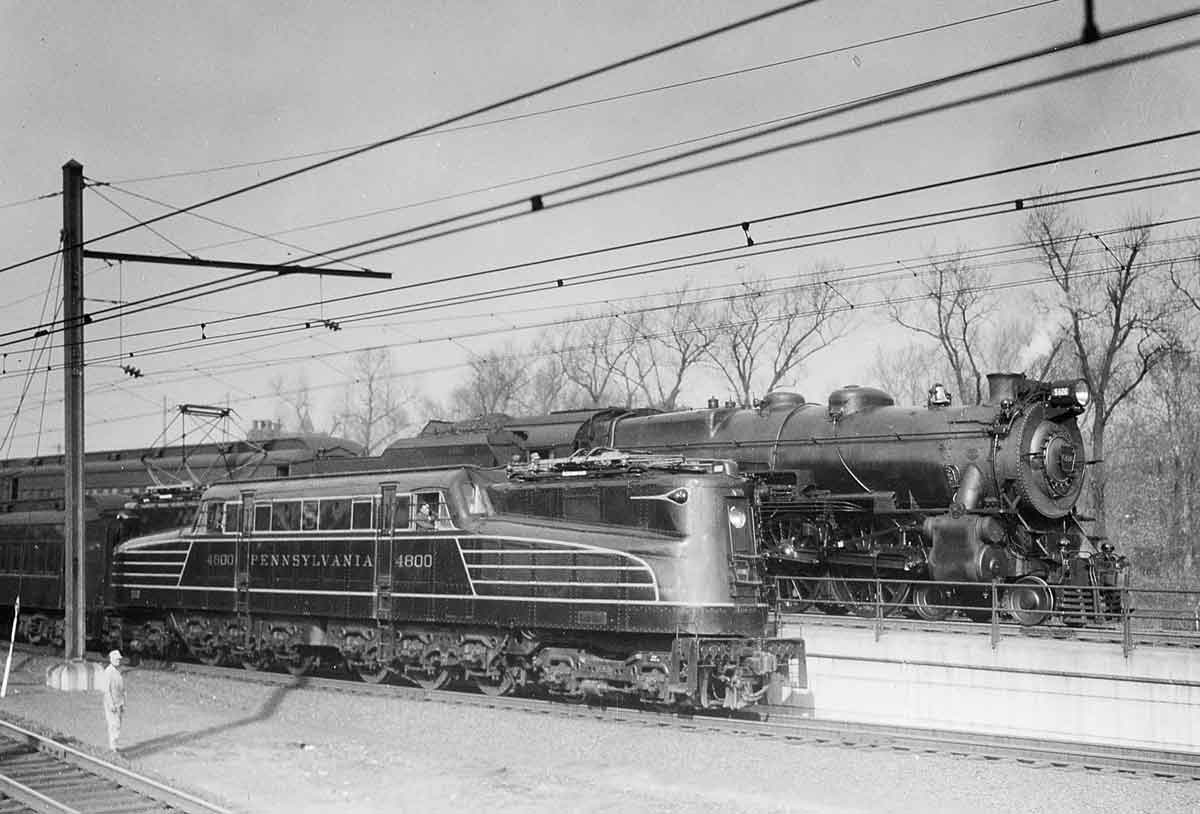
First GG1 with a K4 at Zoo
GG1 4800, renumbered from 4899 but still wearing its original striping, stands beside K4s Pacific 5426 at Zoo interlocking, Philadelphia, on November 30, 1934.
GE photo
GG1 4800, renumbered from 4899 but still wearing its original striping, stands beside K4s Pacific 5426 at Zoo interlocking, Philadelphia, on November 30, 1934.
GE photo

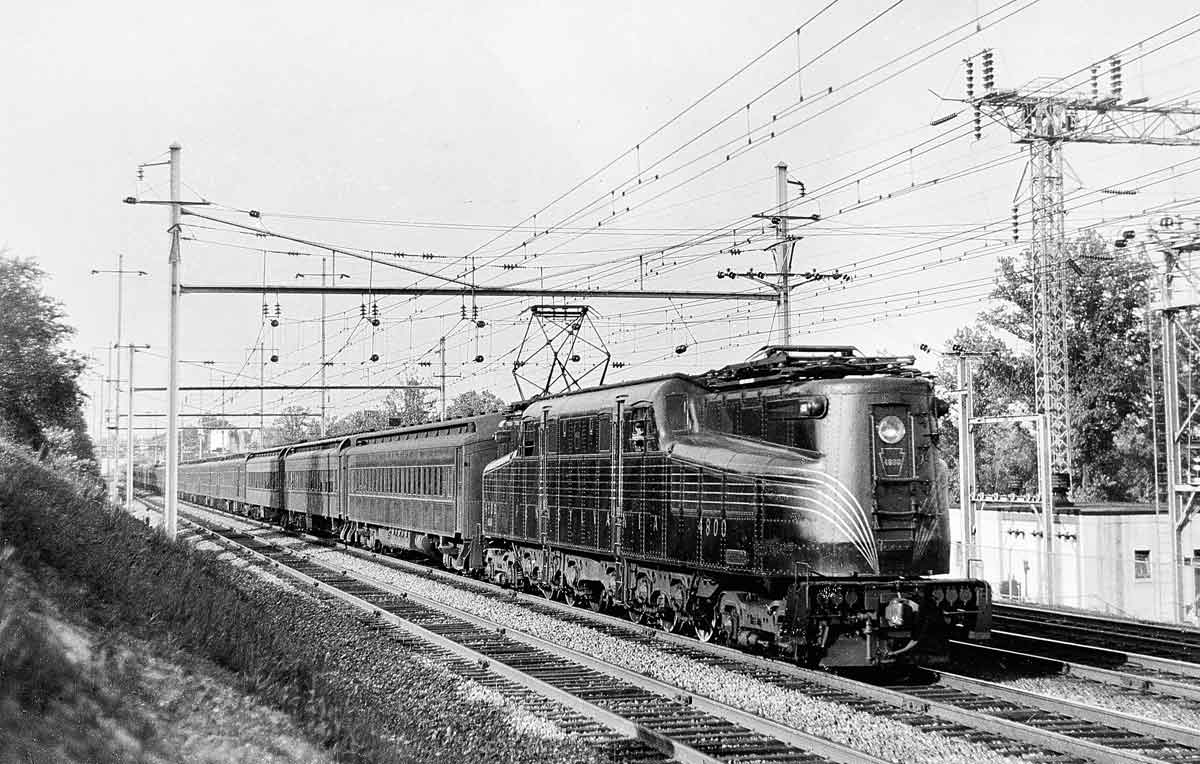
Loewy’s original GG1 scheme
GG1 4800 shows off its Raymond Loewy-designed paint scheme of five widely spaced pinstripes as it passes Loudon Park, Md., with the 17-car southbound Colonial in May 1937.
Charles B. Chaney photo
GG1 4800 shows off its Raymond Loewy-designed paint scheme of five widely spaced pinstripes as it passes Loudon Park, Md., with the 17-car southbound Colonial in May 1937.
Charles B. Chaney photo

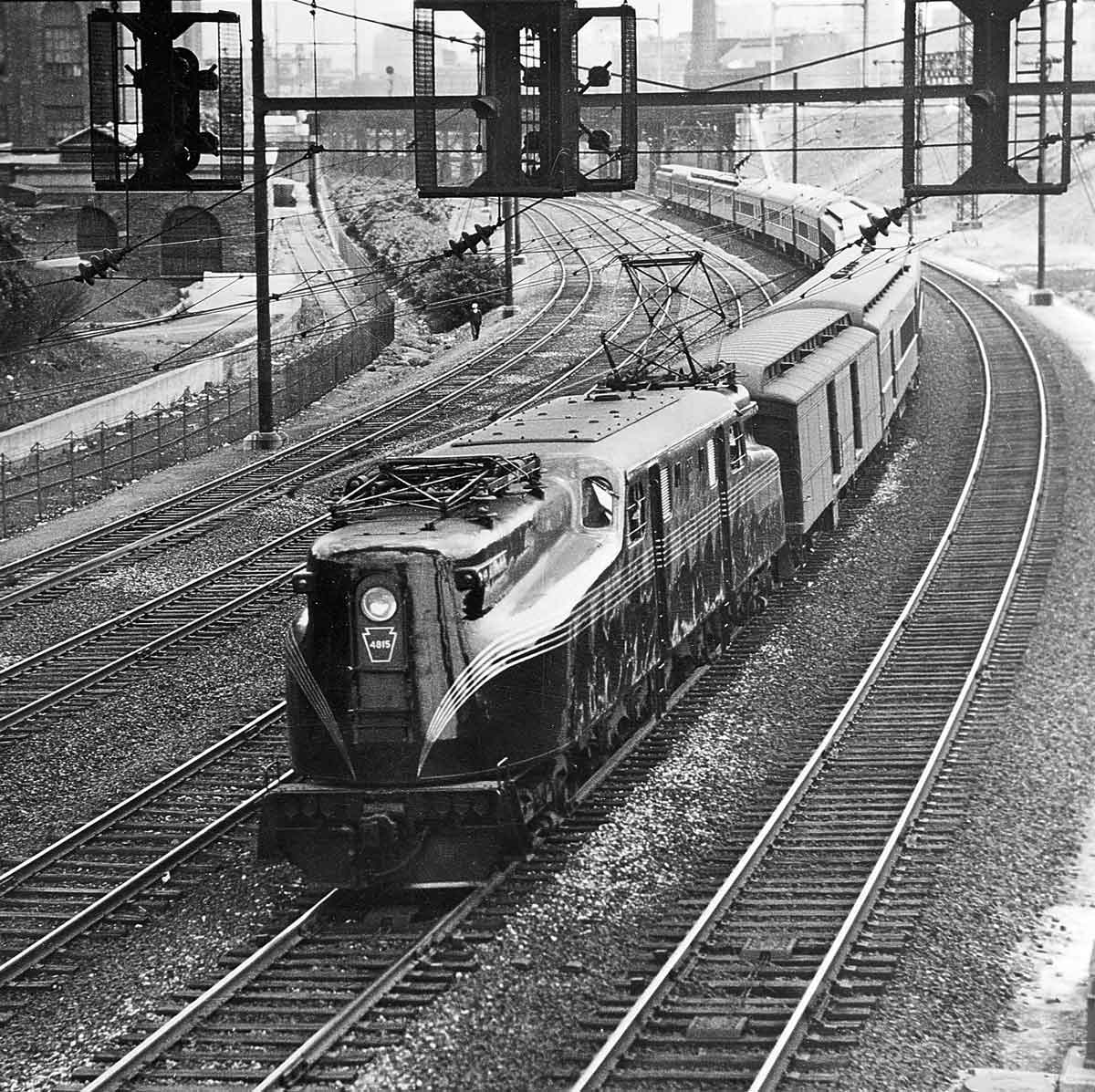
GG1 at Philadelphia
In a view from Arsenal tower in Philadelphia, GG1 4815 accelerates a southbound train away from 30th Street Station in July 1936.
GE photo
In a view from Arsenal tower in Philadelphia, GG1 4815 accelerates a southbound train away from 30th Street Station in July 1936.
GE photo

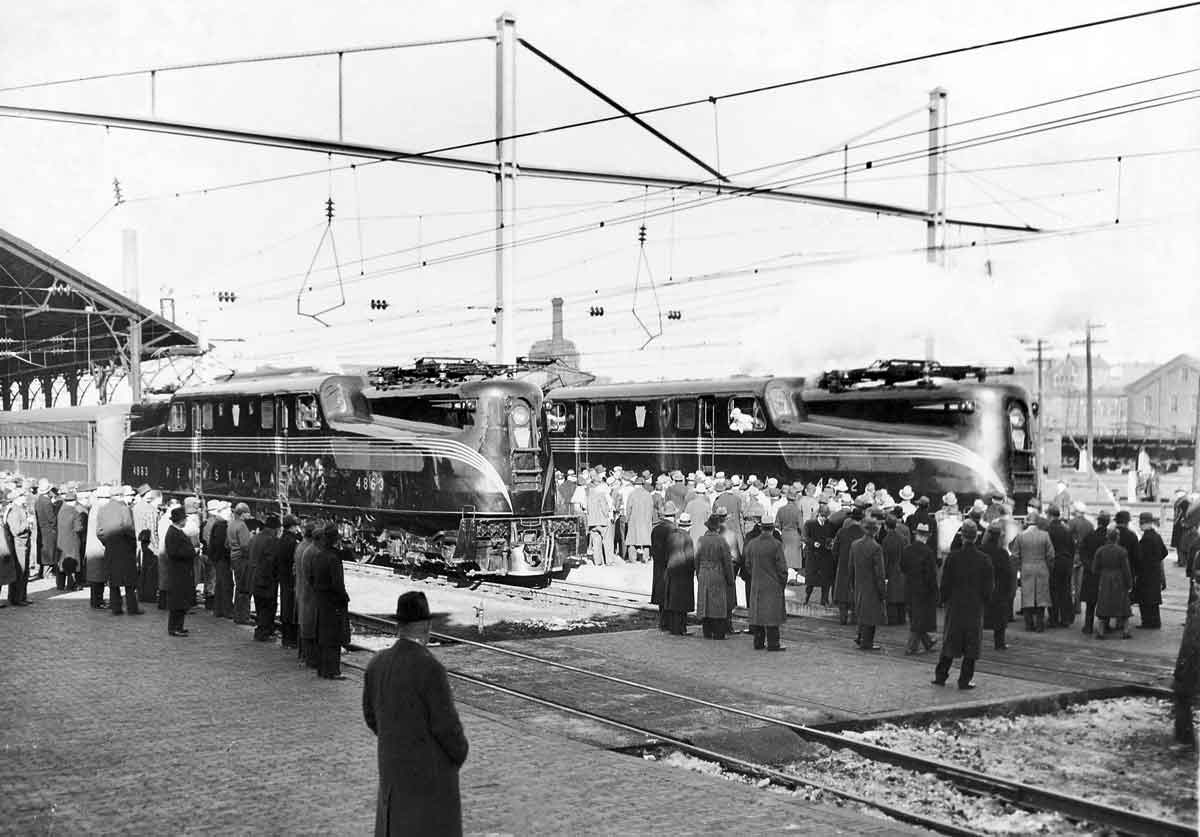
First electrics at Harrisburg
GG1s 4862 and 4863 sparkle in the winter sun at Harrisburg on January 15, 1938 — first day of electrified service to the Pennsylvania state capital.
Al Rung photo
GG1s 4862 and 4863 sparkle in the winter sun at Harrisburg on January 15, 1938 — first day of electrified service to the Pennsylvania state capital.
Al Rung photo

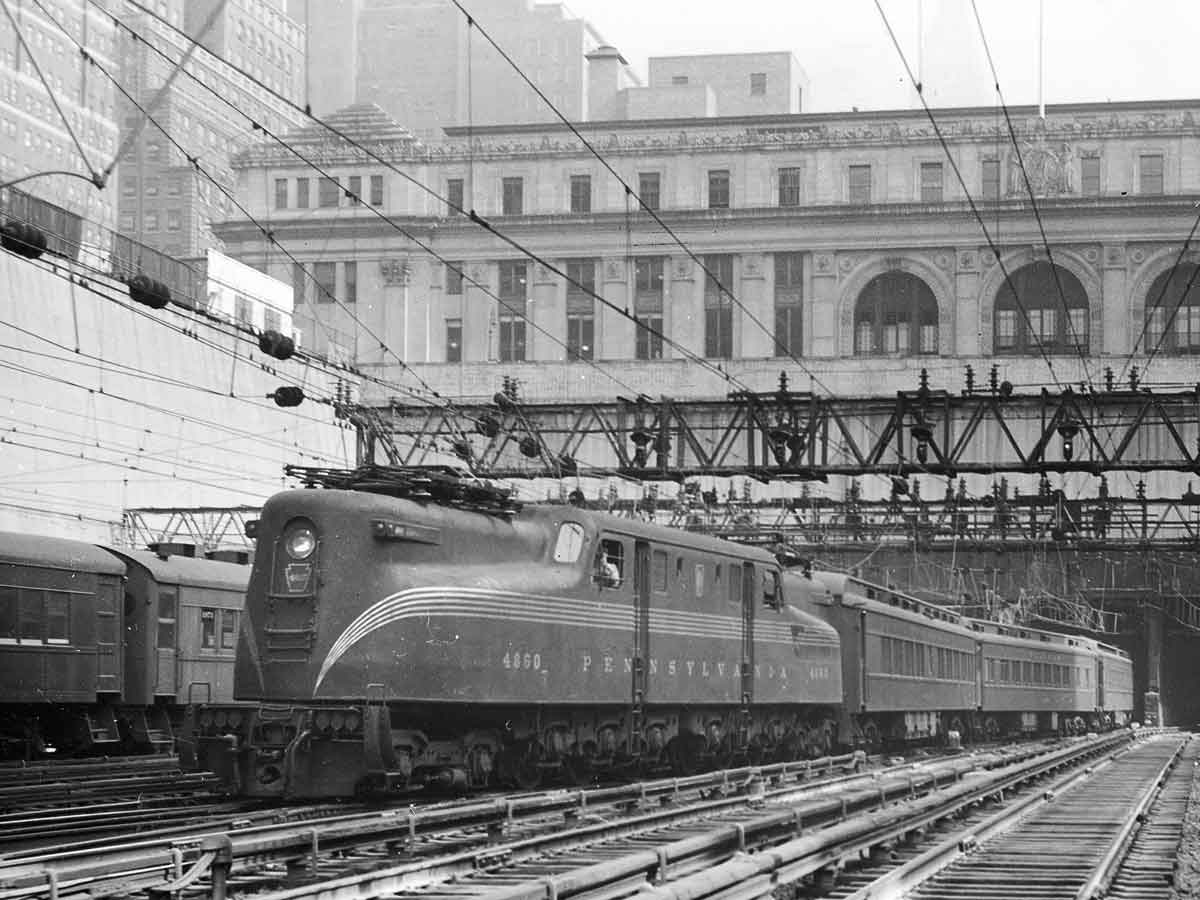
GG1 departing Penn Station
GG1 4860 passes through the open area between New York City’s General Post Office and the east portal of the Hudson River tubes as it departs Penn Station in the 1940s.
Frank Clodfelter photo
GG1 4860 passes through the open area between New York City’s General Post Office and the east portal of the Hudson River tubes as it departs Penn Station in the 1940s.
Frank Clodfelter photo

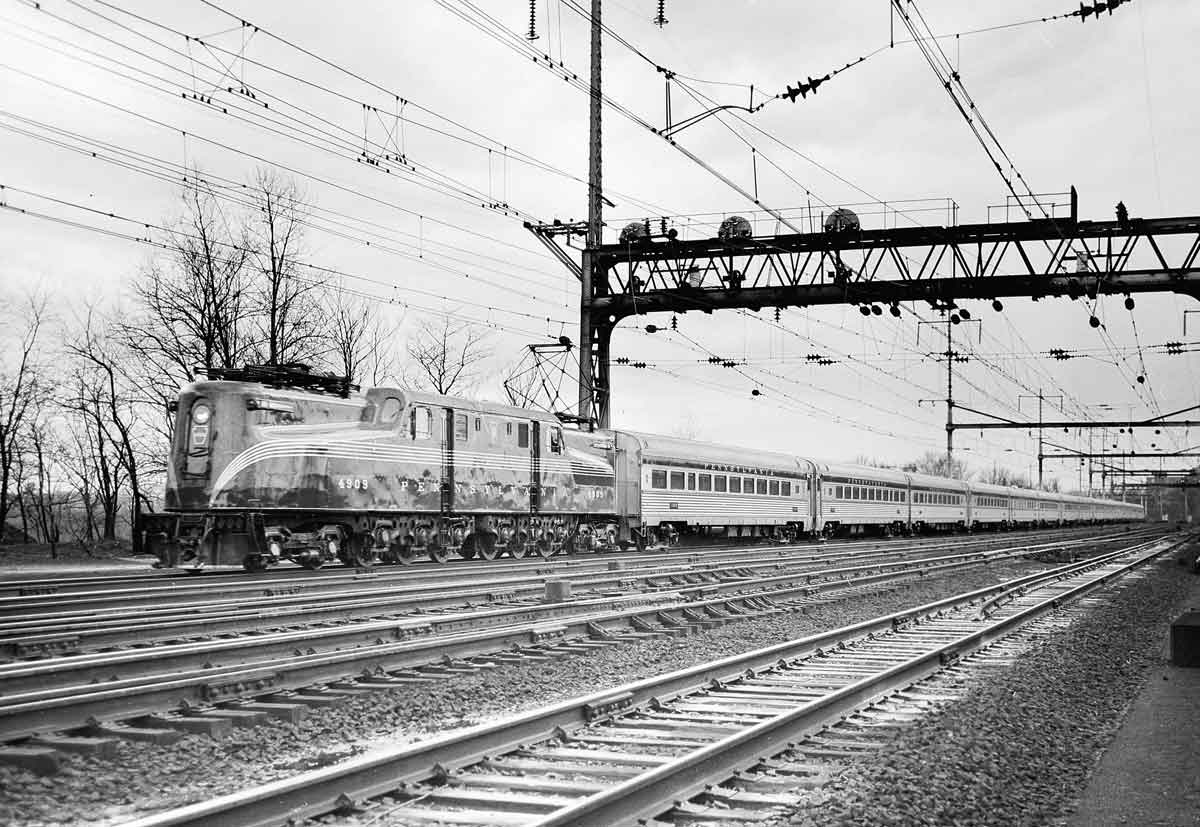
Tuscan GG1 with the new Congressional
GG1 4909, one of several G’s painted Tuscan red for service on the new Congressional and Senator trains, is a few minutes out of 30th Street, Philadelphia, with the first run of the newly re-equipped eastbound Congressional on March 17, 1952.
Wayne P. Ellis photo
GG1 4909, one of several G’s painted Tuscan red for service on the new Congressional and Senator trains, is a few minutes out of 30th Street, Philadelphia, with the first run of the newly re-equipped eastbound Congressional on March 17, 1952.
Wayne P. Ellis photo

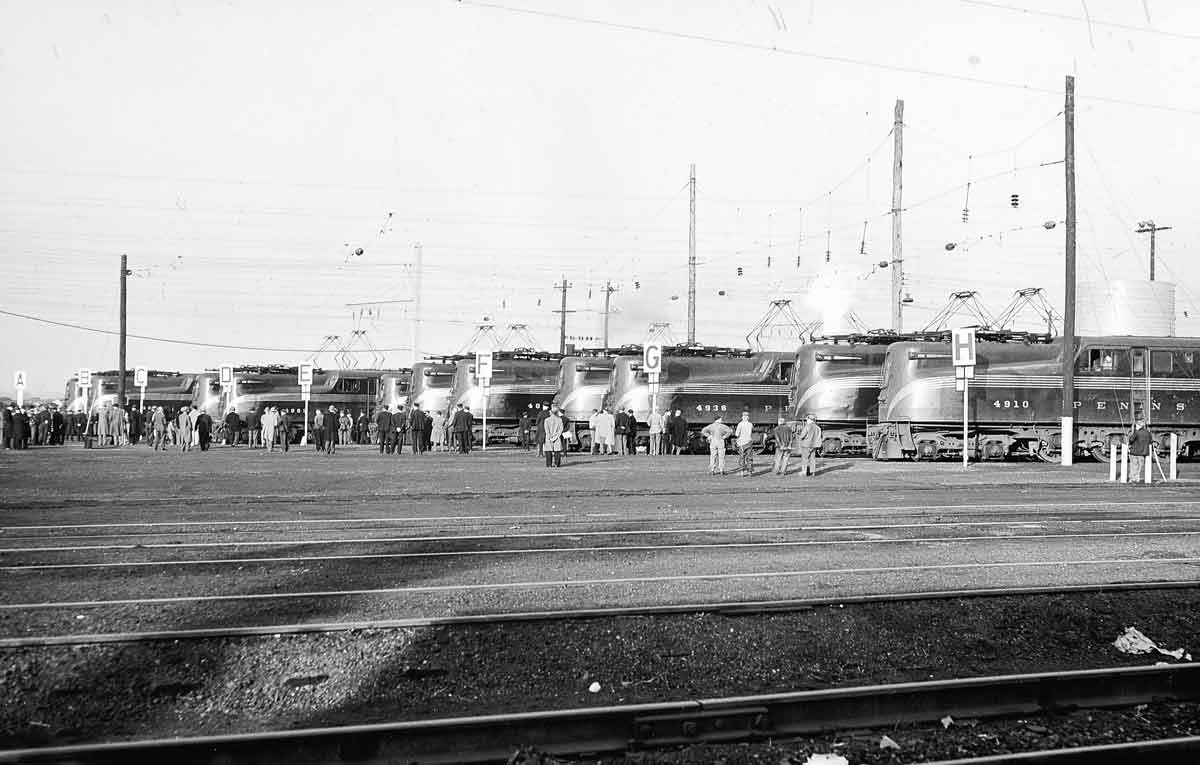
Army-Navy Game specials
This lineup of 11 GG1s represents less than half the special trains PRR operated to the annual Army-Navy football game in South Philadelphia on December 1, 1951.
John F. Endler Jr. photo
This lineup of 11 GG1s represents less than half the special trains PRR operated to the annual Army-Navy football game in South Philadelphia on December 1, 1951.
John F. Endler Jr. photo

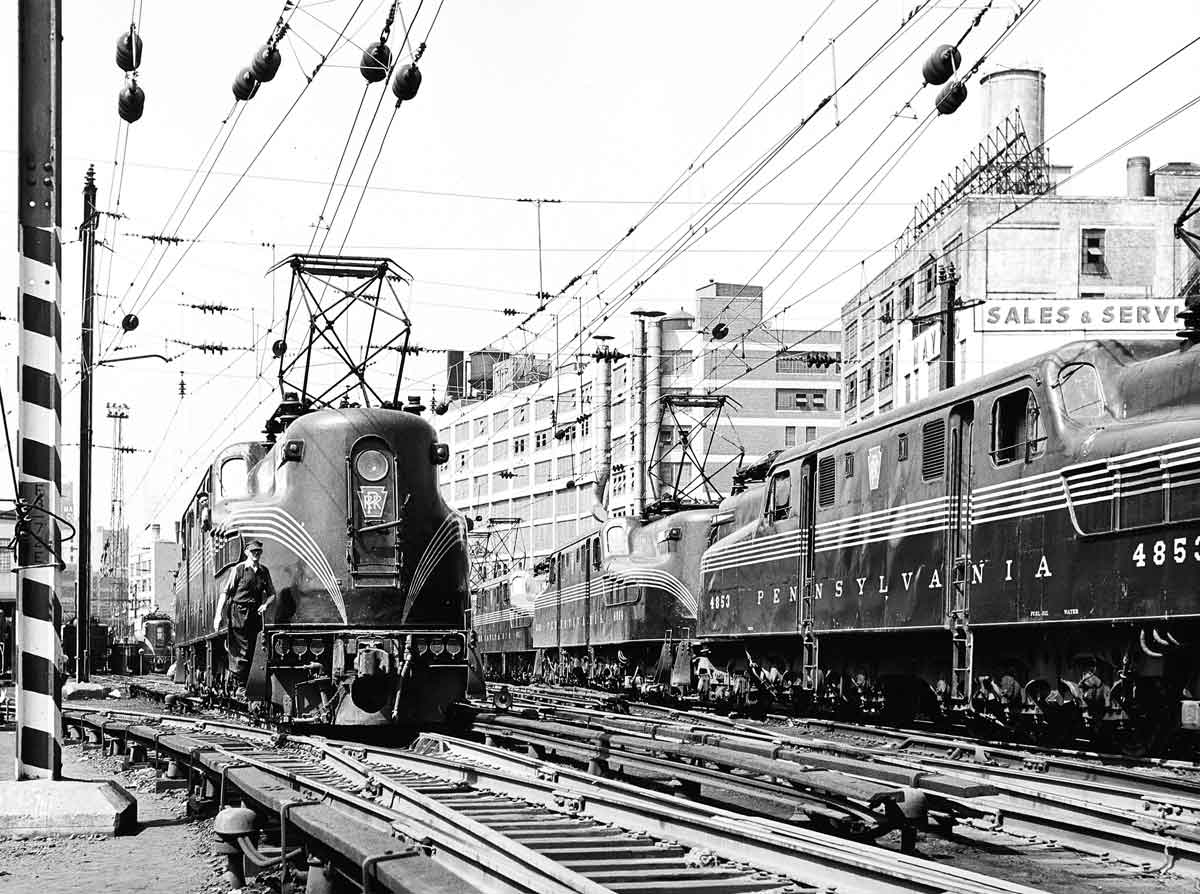
GG1s in Sunnyside Yard
GG1s congregate at Sunnyside Yard, Queens, before being dispatched on passenger trains out of New York in 1955. James G.
La Vake photo
GG1s congregate at Sunnyside Yard, Queens, before being dispatched on passenger trains out of New York in 1955. James G.
La Vake photo

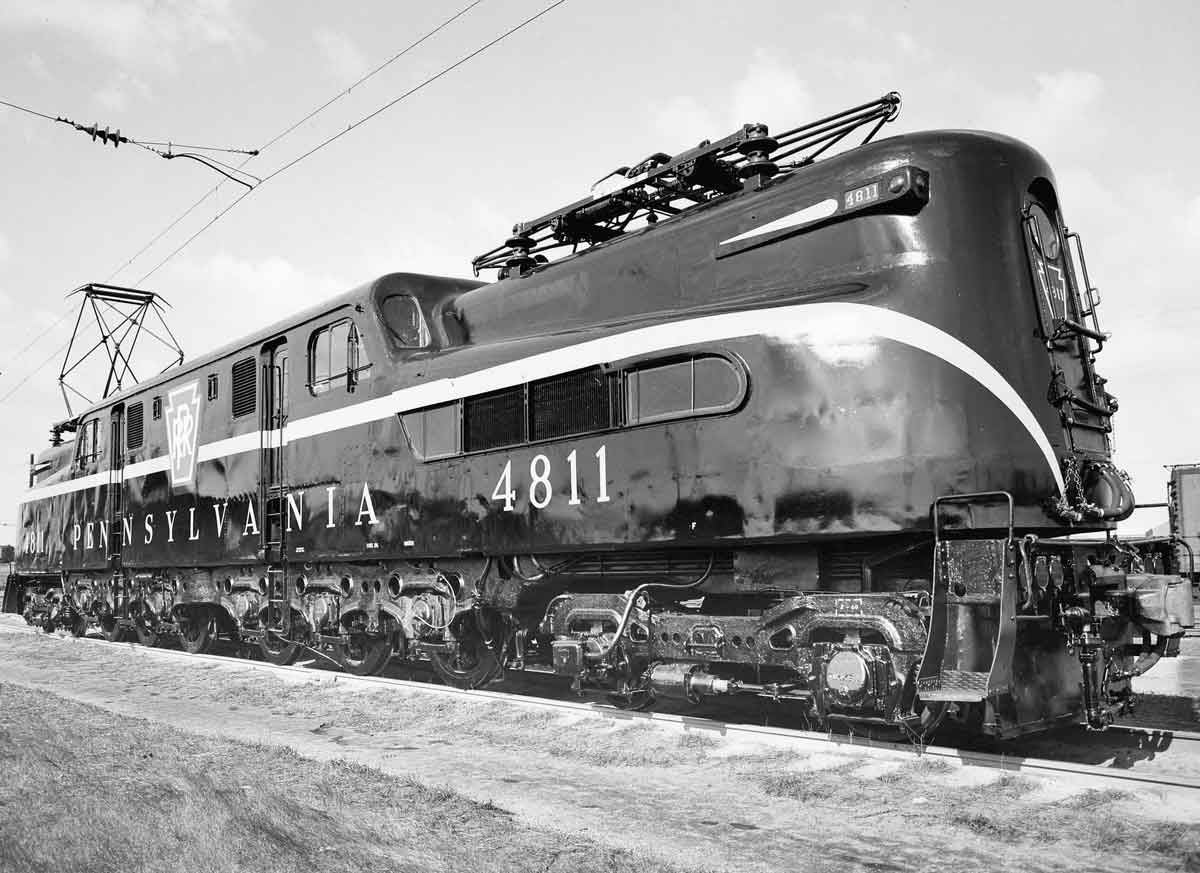
Fresh out of Wilmington
GG1 4811 is fresh from overhaul at Wilmington Shops on February 27, 1960.
Don Wood photo
GG1 4811 is fresh from overhaul at Wilmington Shops on February 27, 1960.
Don Wood photo

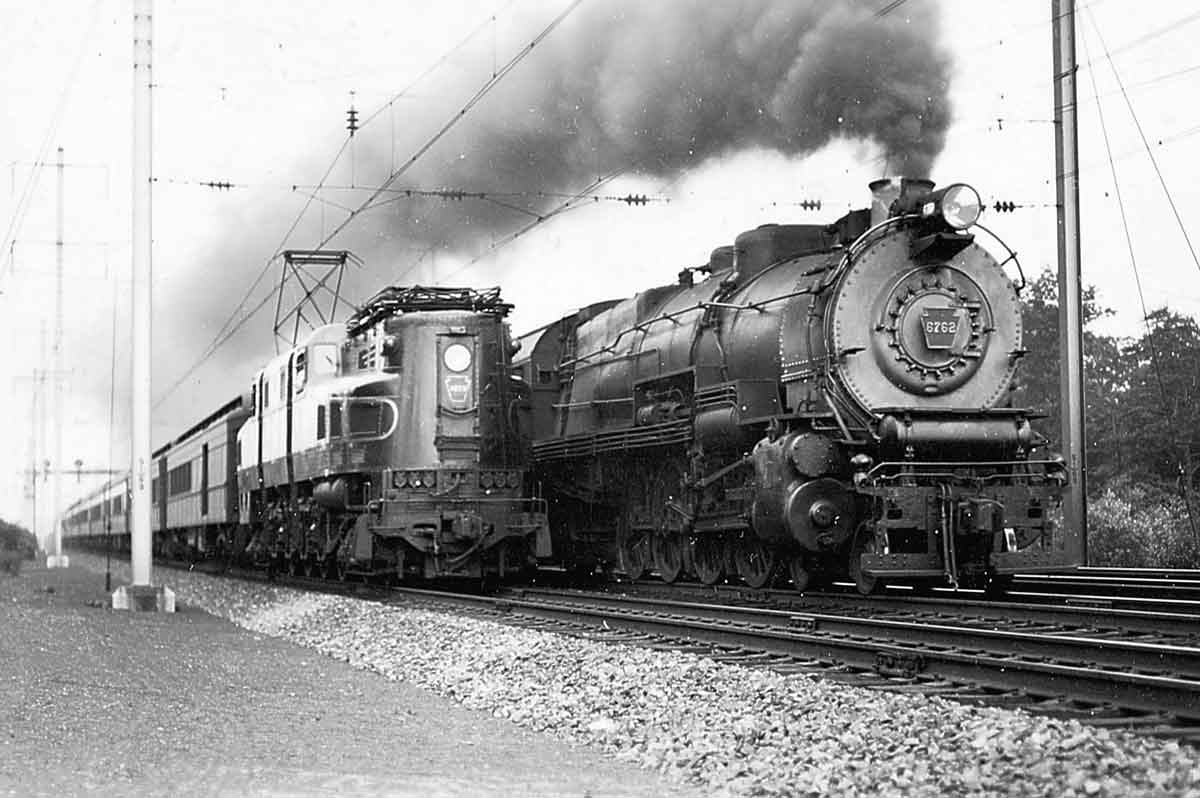
R1 passing M1
The lone R1 2-D-2 — wearing No. 4999 by the time of this 1940s photo — speeds a passenger train up the outside track as M1 6762 steps along with a freight on one of the inner tracks. The location is between Princeton Junction and Trenton.
W. R. Osborne photo
The lone R1 2-D-2 — wearing No. 4999 by the time of this 1940s photo — speeds a passenger train up the outside track as M1 6762 steps along with a freight on one of the inner tracks. The location is between Princeton Junction and Trenton.
W. R. Osborne photo

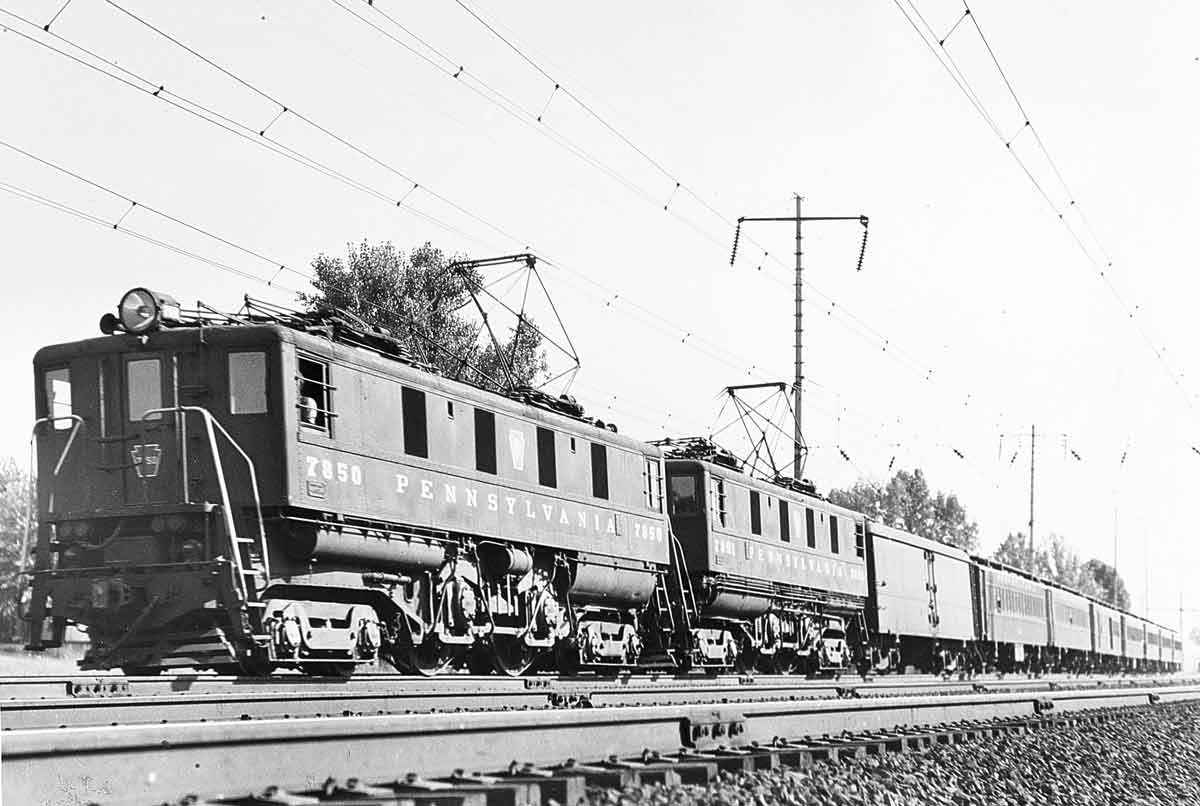
O1 duo
The eight 2-B-2 O1 electrics proved too light for all but the shortest of trains, which is why two units, 7850 and 7851, have been assigned to an eight-car train of mostly suburban equipment between Philadelphia and Wilmington in the late 1940s.
C. A. Brown photo
The eight 2-B-2 O1 electrics proved too light for all but the shortest of trains, which is why two units, 7850 and 7851, have been assigned to an eight-car train of mostly suburban equipment between Philadelphia and Wilmington in the late 1940s.
C. A. Brown photo

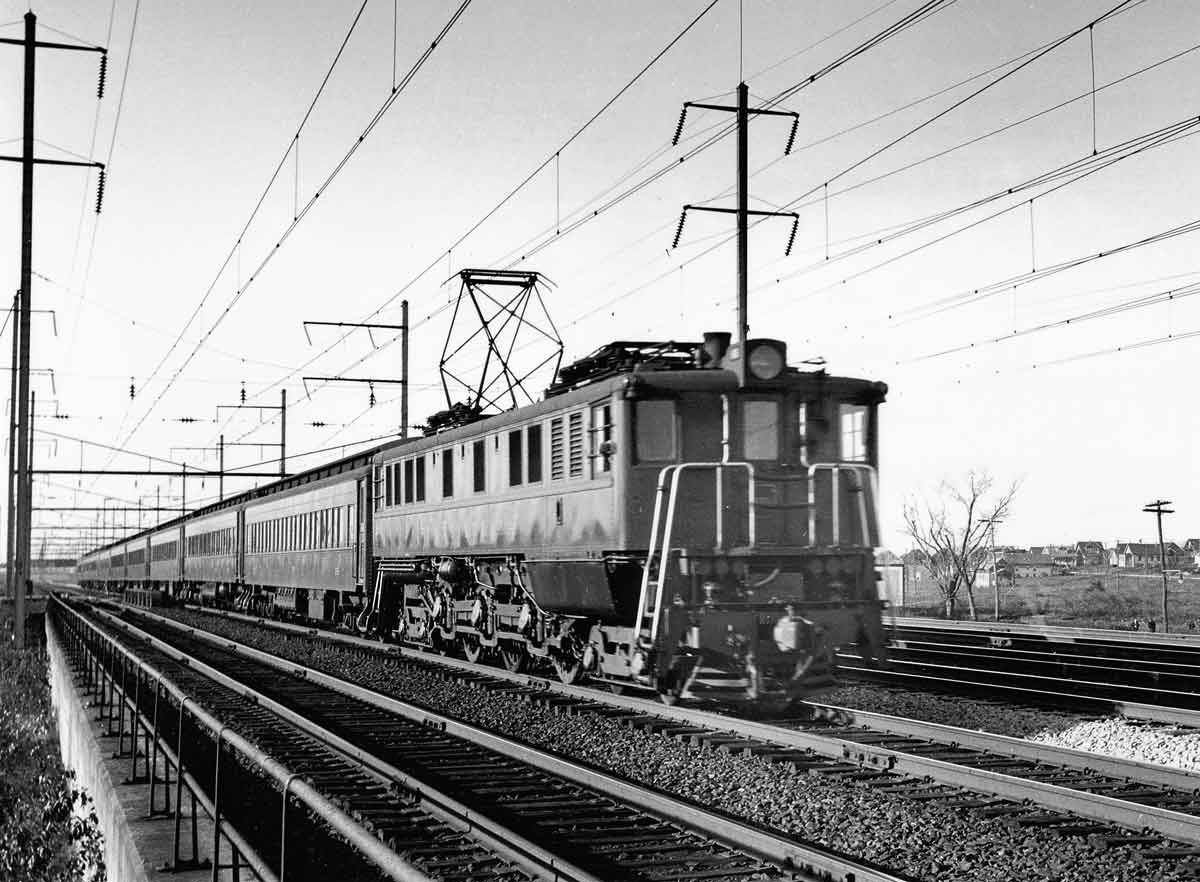
Box-cab P5a on passenger
During the relatively brief time in the early 1930s when single P5a’s held down top passenger assignments, one of the box-cab motors traverses the six-track section between Rahway and South Elizabeth, N.J.
Herbert H. Harwood Jr. coll.
During the relatively brief time in the early 1930s when single P5a’s held down top passenger assignments, one of the box-cab motors traverses the six-track section between Rahway and South Elizabeth, N.J.
Herbert H. Harwood Jr. coll.

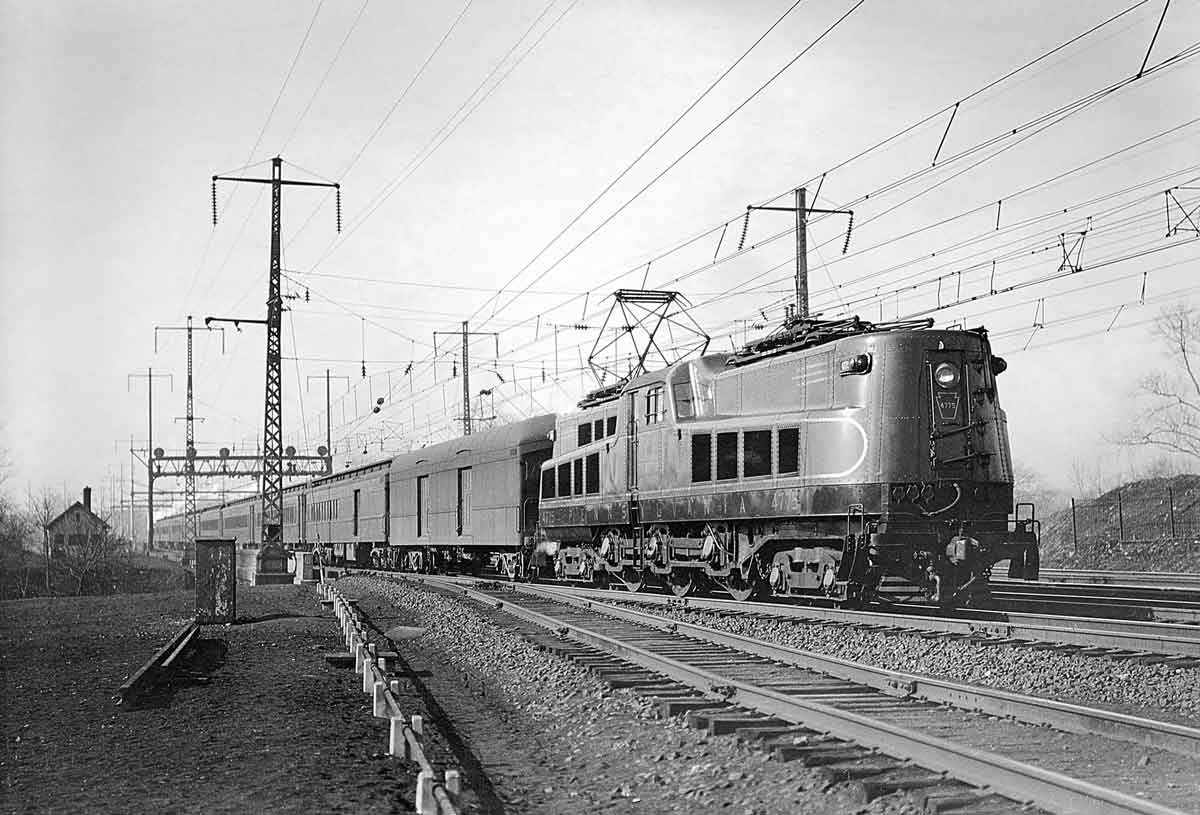
P5a modified on passenger
After a grade-crossing accident killed the crew of a box-cab, subsequent P5a’s were built with a streamlined carbody; “P5a modified” (as the redesigned motors were known) 4788 leads the Legislator toward New York near Zoo Tower, Philadelphia, in May 1935.
Classic Trains coll.
After a grade-crossing accident killed the crew of a box-cab, subsequent P5a’s were built with a streamlined carbody; “P5a modified” (as the redesigned motors were known) 4788 leads the Legislator toward New York near Zoo Tower, Philadelphia, in May 1935.
Classic Trains coll.

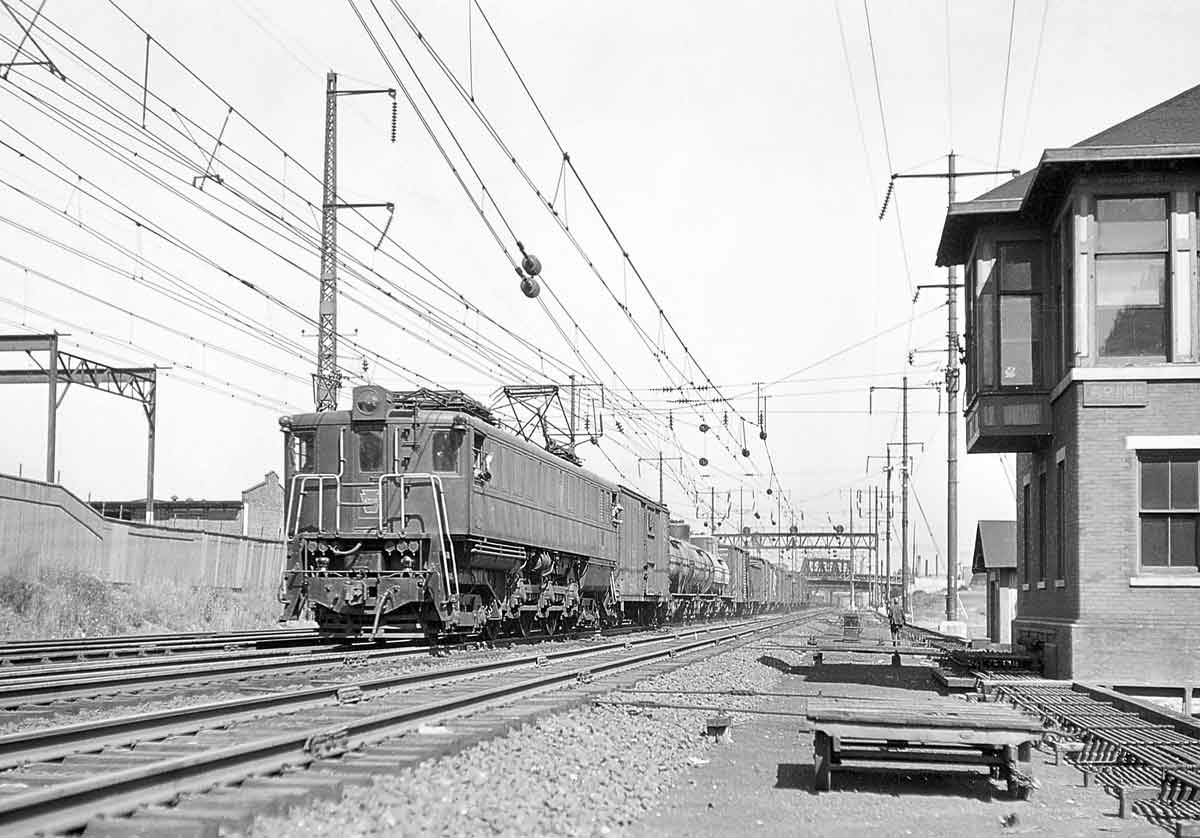
Box-cab P5a on freight
A box-cab P5a, displaced by GG1s from the passenger duties for which it was built, hauls a southbound freight out of Philadelphia in September 1935. It’s passing Brill Tower, named for the adjacent J. G. Brill Co. street- and interurban-car manufacturer.
GE photo
A box-cab P5a, displaced by GG1s from the passenger duties for which it was built, hauls a southbound freight out of Philadelphia in September 1935. It’s passing Brill Tower, named for the adjacent J. G. Brill Co. street- and interurban-car manufacturer.
GE photo

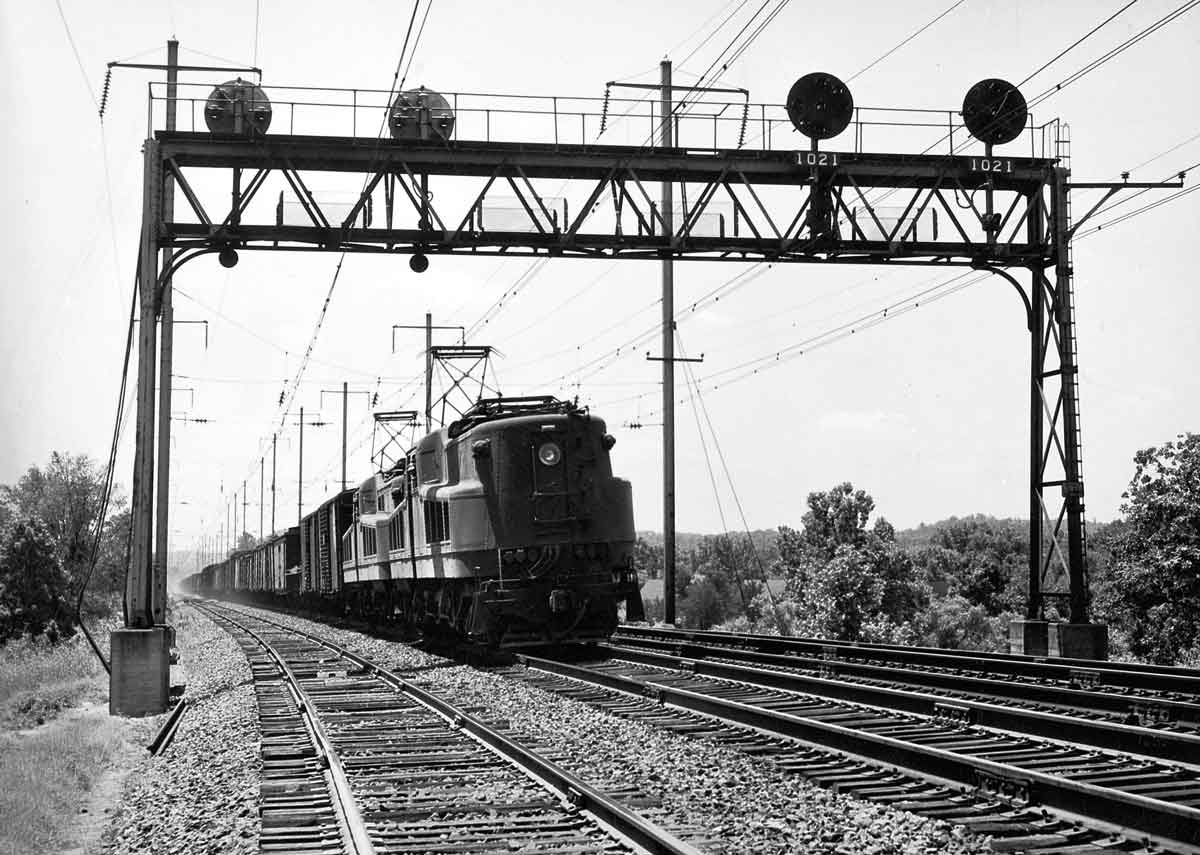
P5a modifieds on freight
Two P5a modified motors pass the signal bridge at milepost 102 (from Philadelphia) near Halethorpe, Md., with a northbound freight in the 1940s.
Frank Clodfelter photo
Two P5a modified motors pass the signal bridge at milepost 102 (from Philadelphia) near Halethorpe, Md., with a northbound freight in the 1940s.
Frank Clodfelter photo

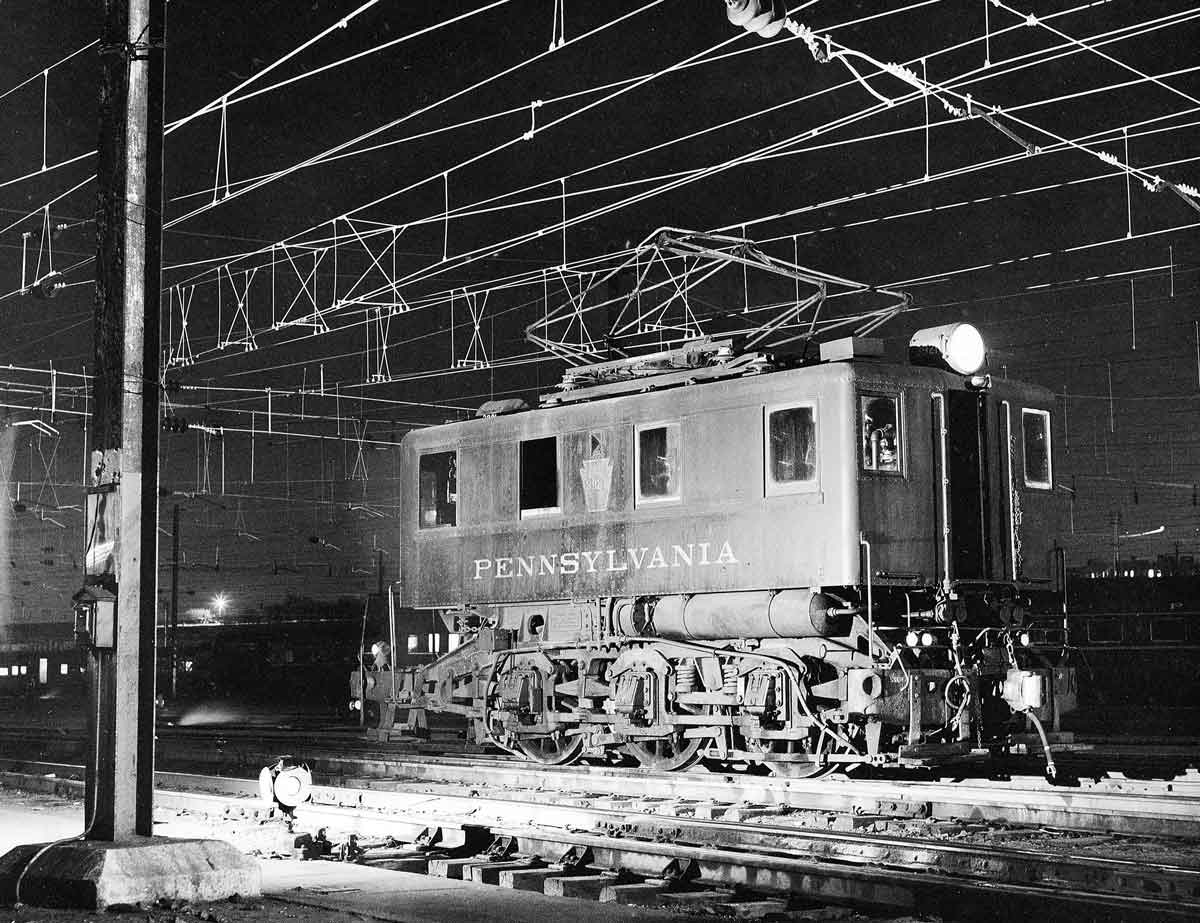
“Rat” in Sunnyside
Class B1 switcher awaits its next move at Sunnyside Yard, New York, on a summer night in 1960. PRR men called the six-wheel box-cabs “rats.”
Jim Shaughnessy photo
Class B1 switcher awaits its next move at Sunnyside Yard, New York, on a summer night in 1960. PRR men called the six-wheel box-cabs “rats.”
Jim Shaughnessy photo

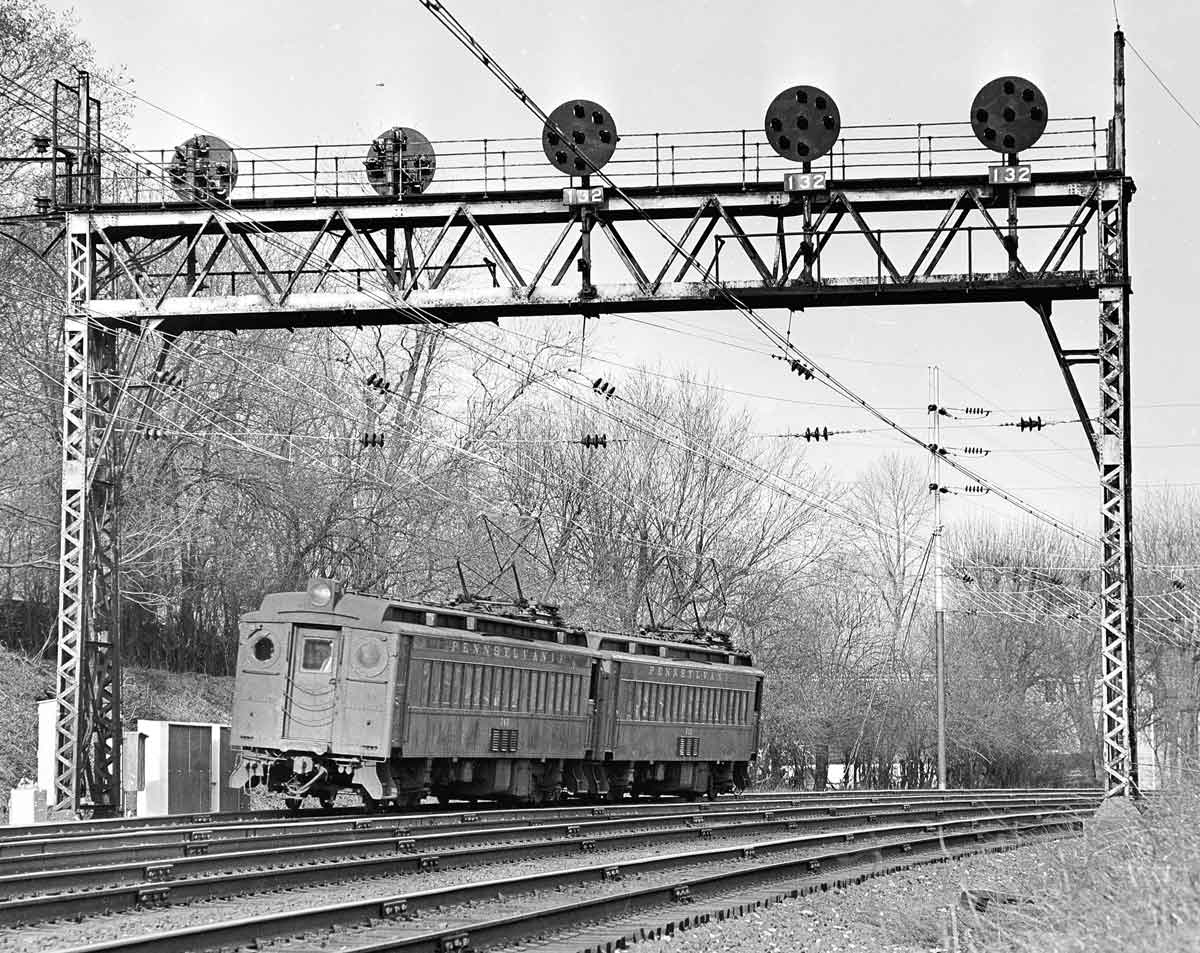
MP54s on the Main Line
A short midday MP54 Paoli Local train approaches Radnor station in April 1964.
William D. Middleton photo
A short midday MP54 Paoli Local train approaches Radnor station in April 1964.
William D. Middleton photo

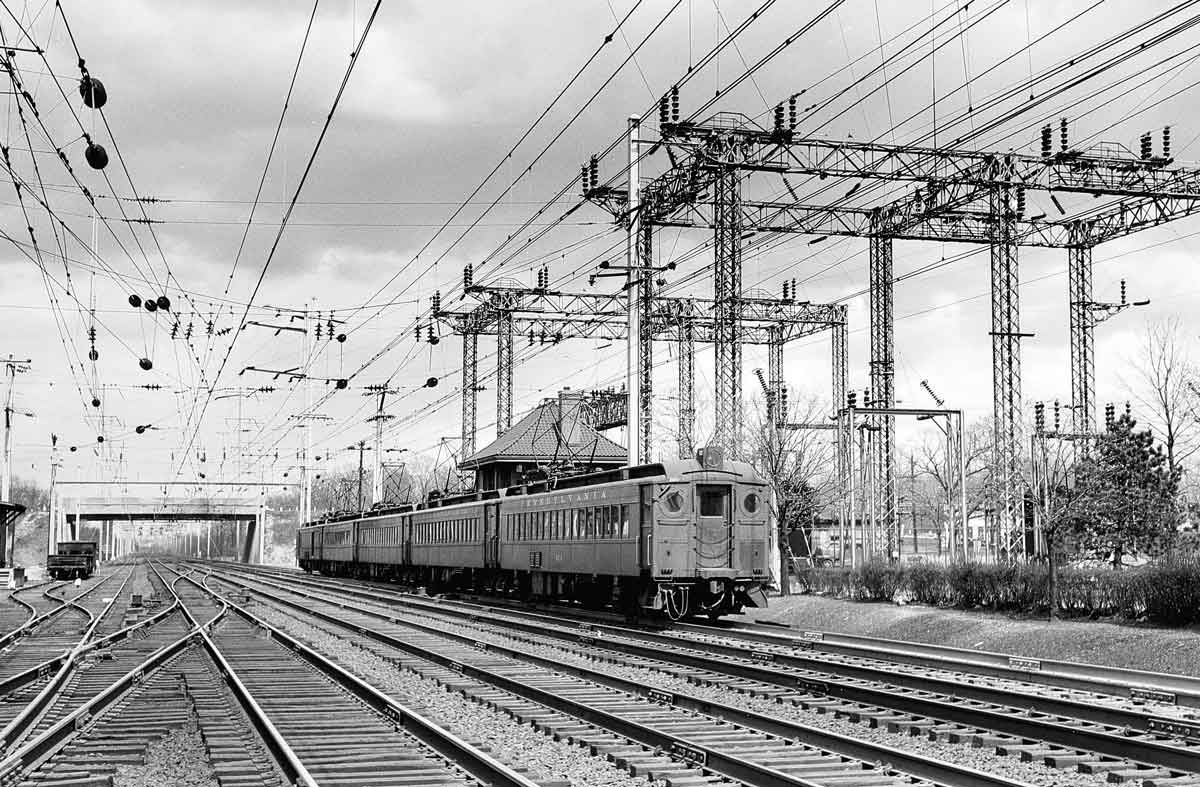
MP54s at Princeton Junction
An RPO-baggage car leads a train of New York-bound MP54s past Nassau Tower as the train departs Princeton Junction in 1952.
Herbert H. Harwood Jr. photo
An RPO-baggage car leads a train of New York-bound MP54s past Nassau Tower as the train departs Princeton Junction in 1952.
Herbert H. Harwood Jr. photo

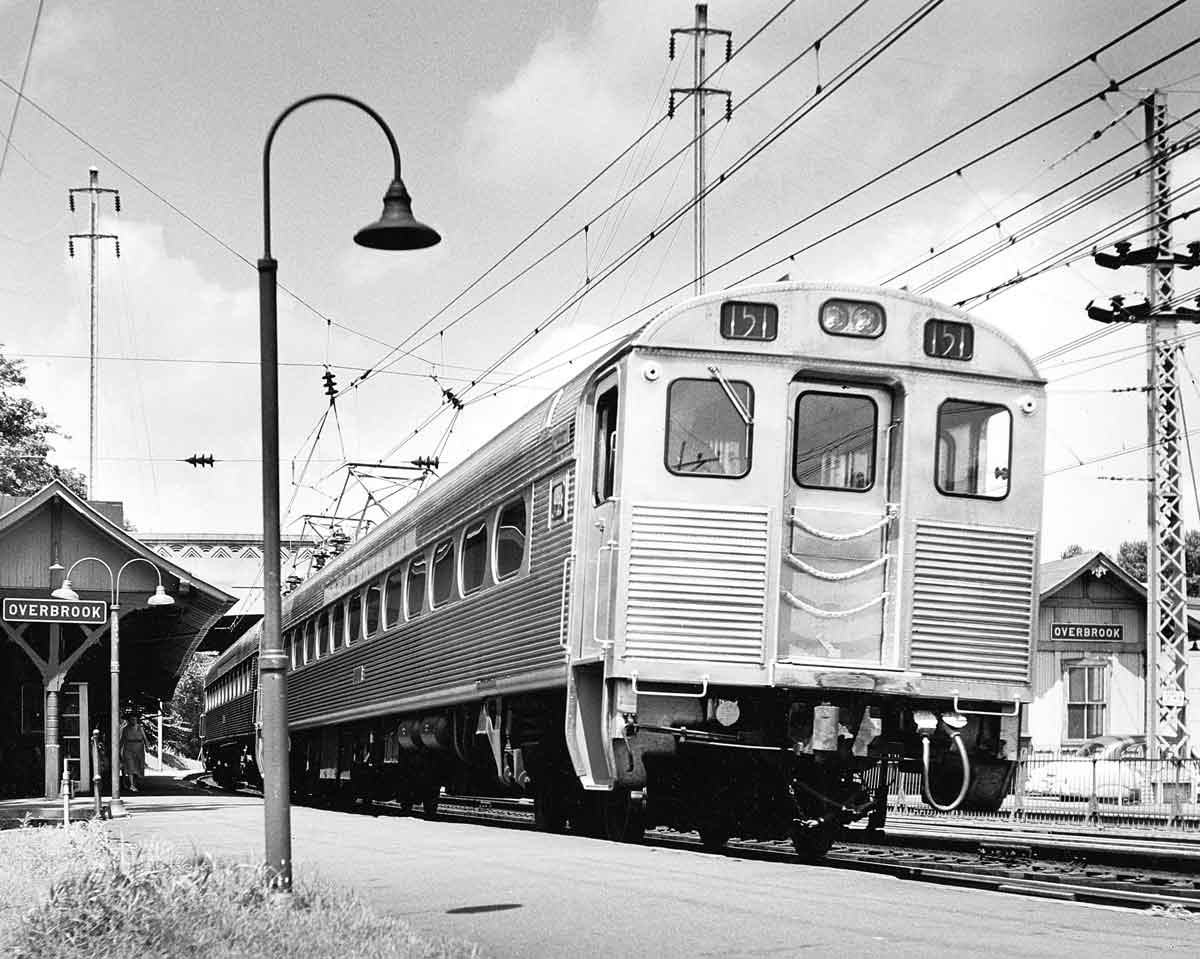
Pioneer III cars at Overbrook
Nearly new, two of PRR’s six Budd-built MP85 cars pause at Overbrook during a Paoli–Philadelphia run in July 1958.
Aaron G. Fryer photo
Nearly new, two of PRR’s six Budd-built MP85 cars pause at Overbrook during a Paoli–Philadelphia run in July 1958.
Aaron G. Fryer photo

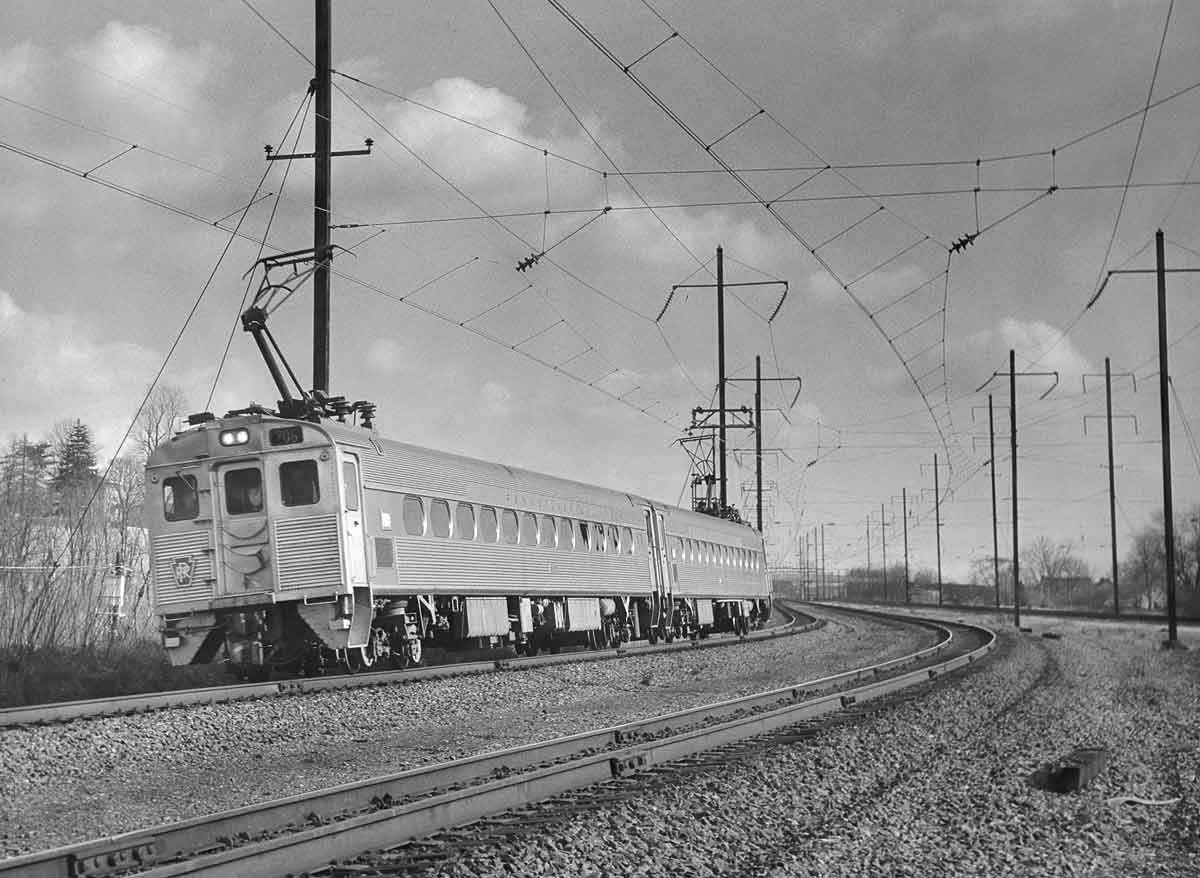
Silverliners to Harrisburg
Two Budd-built “Silverliner II” MU’s float through Atglen, Pa., on a Nov. 29, 1965, press trip to preview the cars’ new assignment on Philadelphia-Harrisburg trains.
David G. Knox photo
Two Budd-built “Silverliner II” MU’s float through Atglen, Pa., on a Nov. 29, 1965, press trip to preview the cars’ new assignment on Philadelphia-Harrisburg trains.
David G. Knox photo

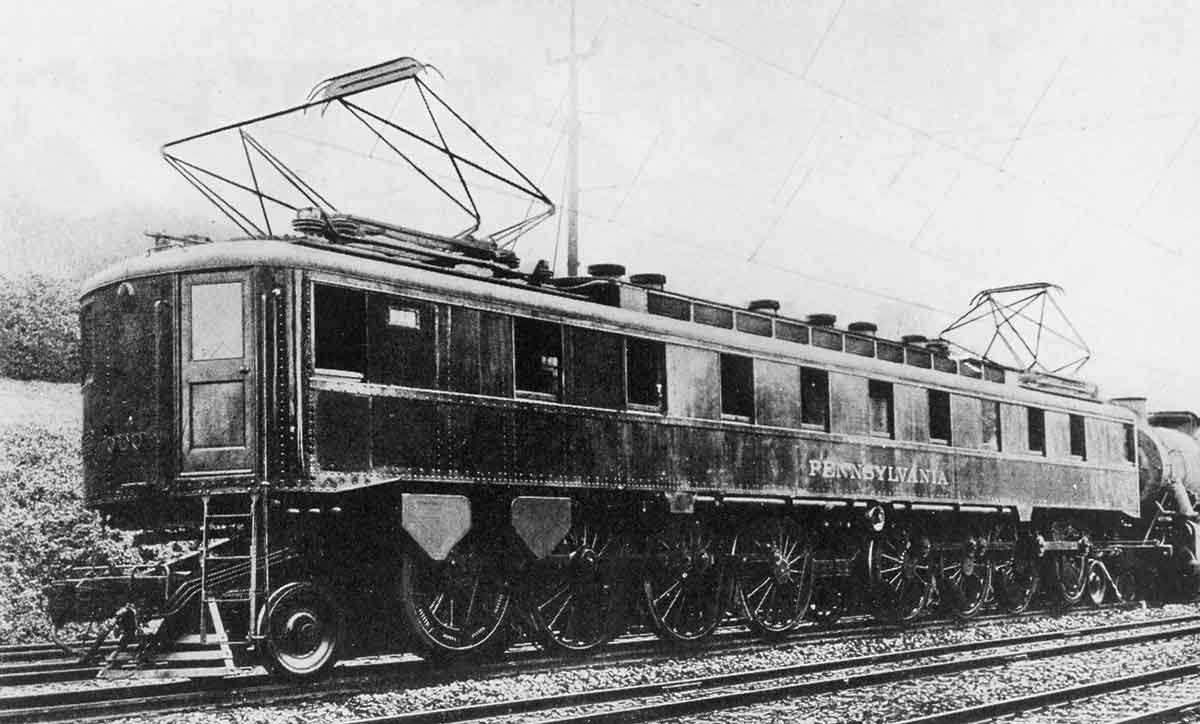
Motor for the mountains
The lone FF1, wheel arrangement 1-C+C-1, helps an L1s Mikado lift a freight up the Main Line in the 1910s. PRR built this unit with an eye toward electrifying over the Alleghenies.
Classic Trains coll.
The lone FF1, wheel arrangement 1-C+C-1, helps an L1s Mikado lift a freight up the Main Line in the 1910s. PRR built this unit with an eye toward electrifying over the Alleghenies.
Classic Trains coll.

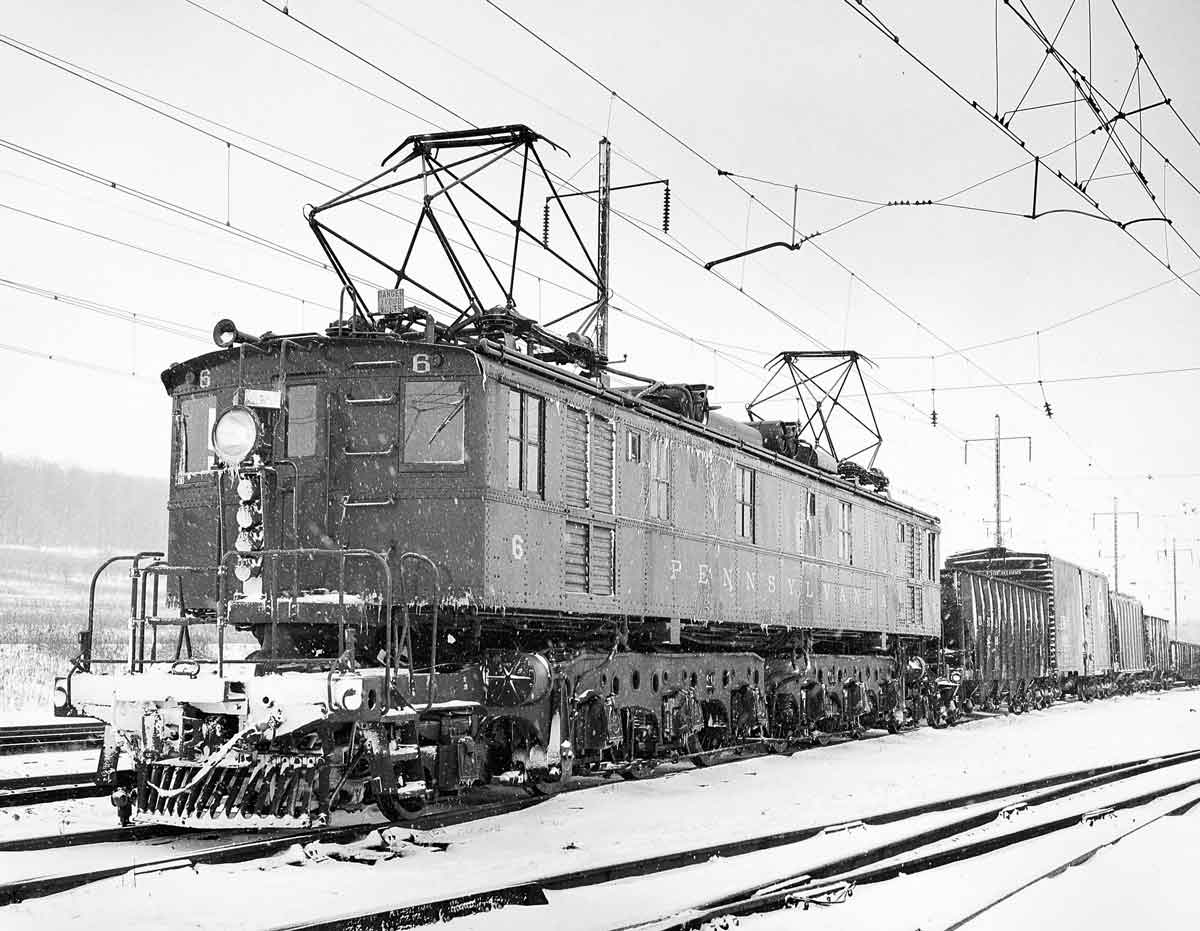
Ex-GN box-cab
No. 6, one of eight 1920s-vintage 1-C+C-1 motor-generator units PRR bought from the Great Northern in 1956, heads a Lancaster-bound freight at Thorndale, Pa., in February 1958. On GN they were class Y-1; PRR's designation was FF2.
Don Wood photo
No. 6, one of eight 1920s-vintage 1-C+C-1 motor-generator units PRR bought from the Great Northern in 1956, heads a Lancaster-bound freight at Thorndale, Pa., in February 1958. On GN they were class Y-1; PRR's designation was FF2.
Don Wood photo

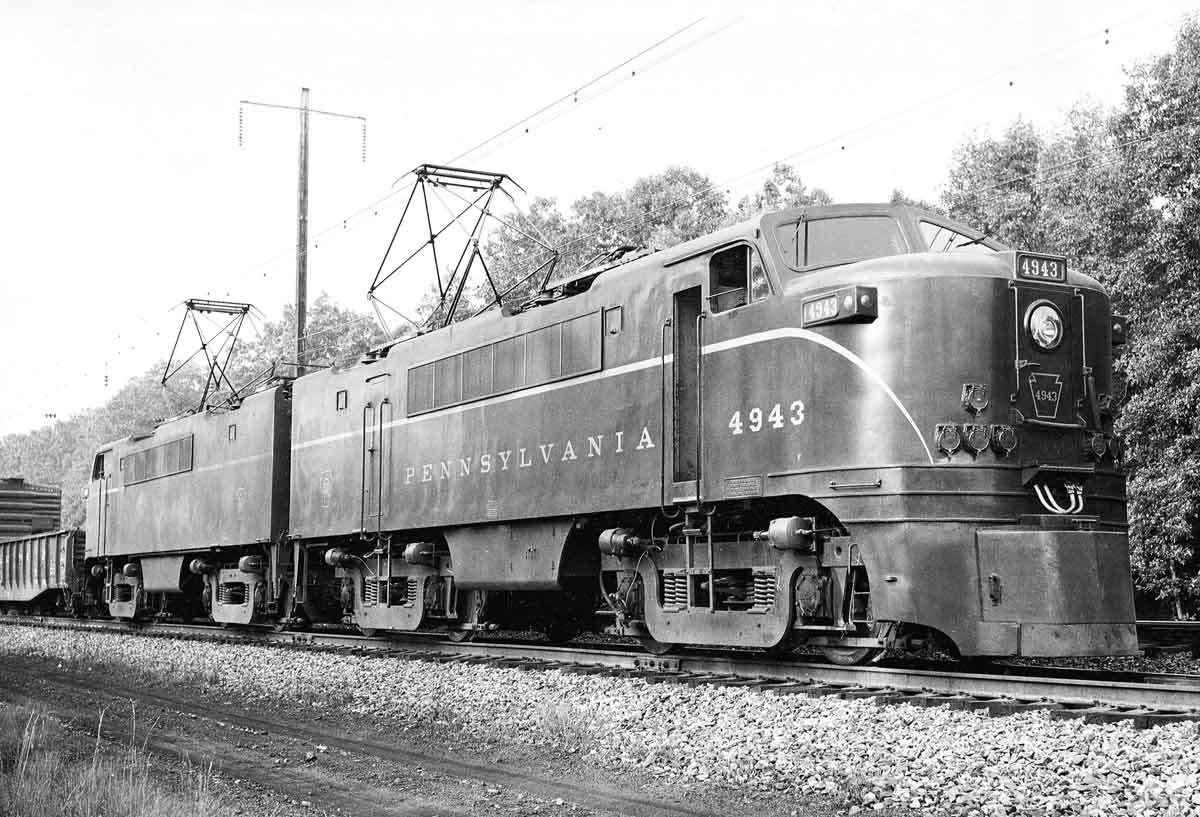
Experimental GE electrics
E2b 4943 leads a sister on a freight at Severn, Md., in September 1953. GE’s six E2b units tested on the New Haven and Great Northern before taking up permanent residence on the PRR.
H. N. Proctor photo
E2b 4943 leads a sister on a freight at Severn, Md., in September 1953. GE’s six E2b units tested on the New Haven and Great Northern before taking up permanent residence on the PRR.
H. N. Proctor photo

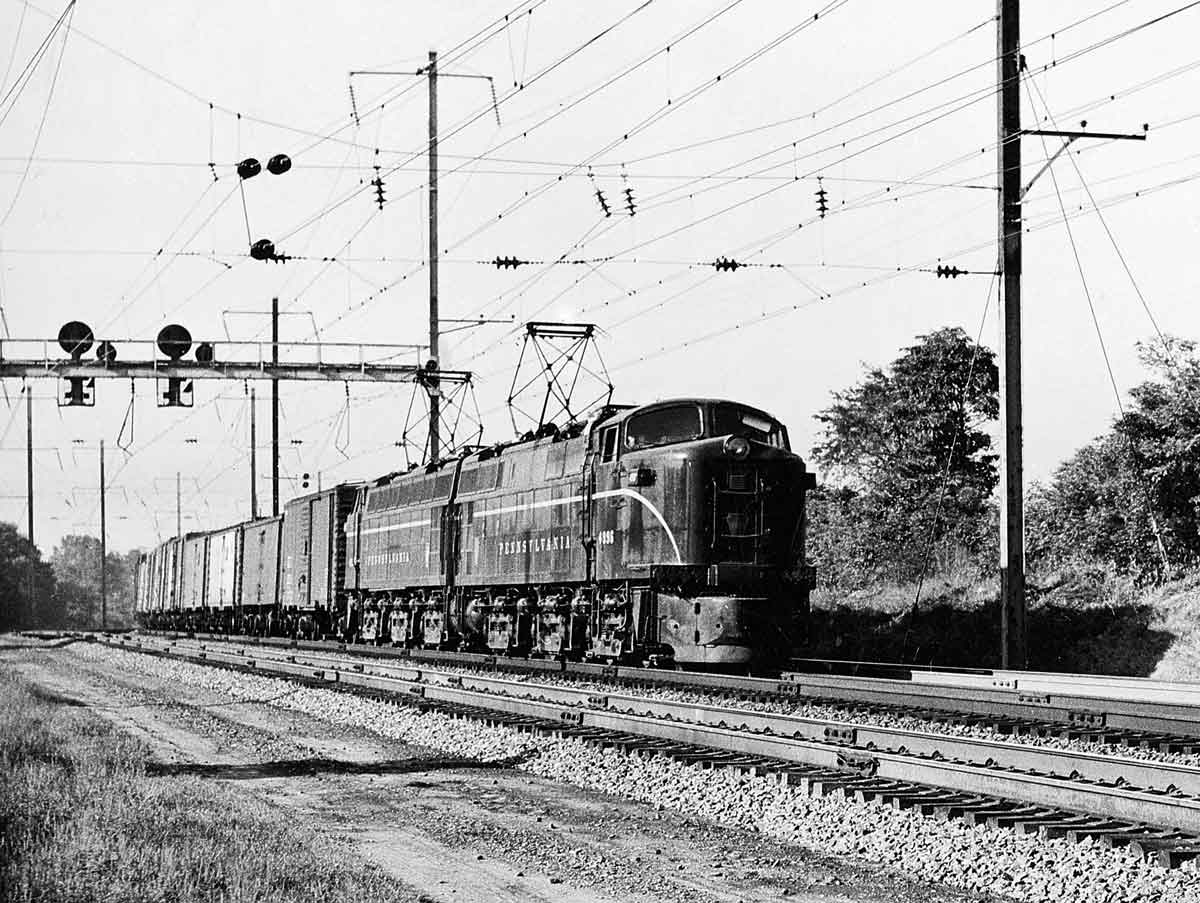
Experimental Westinghouse electrics
Experimental E3b B-B-Bs 4996 and 4995 roll freight MD-12 north at Odenton, Md., in September 1953. Baldwin-Westinghouse built these units and two similar C-Cs to demonstrate new ignitron rectifier technology.
H. N. Proctor photo
Experimental E3b B-B-Bs 4996 and 4995 roll freight MD-12 north at Odenton, Md., in September 1953. Baldwin-Westinghouse built these units and two similar C-Cs to demonstrate new ignitron rectifier technology.
H. N. Proctor photo

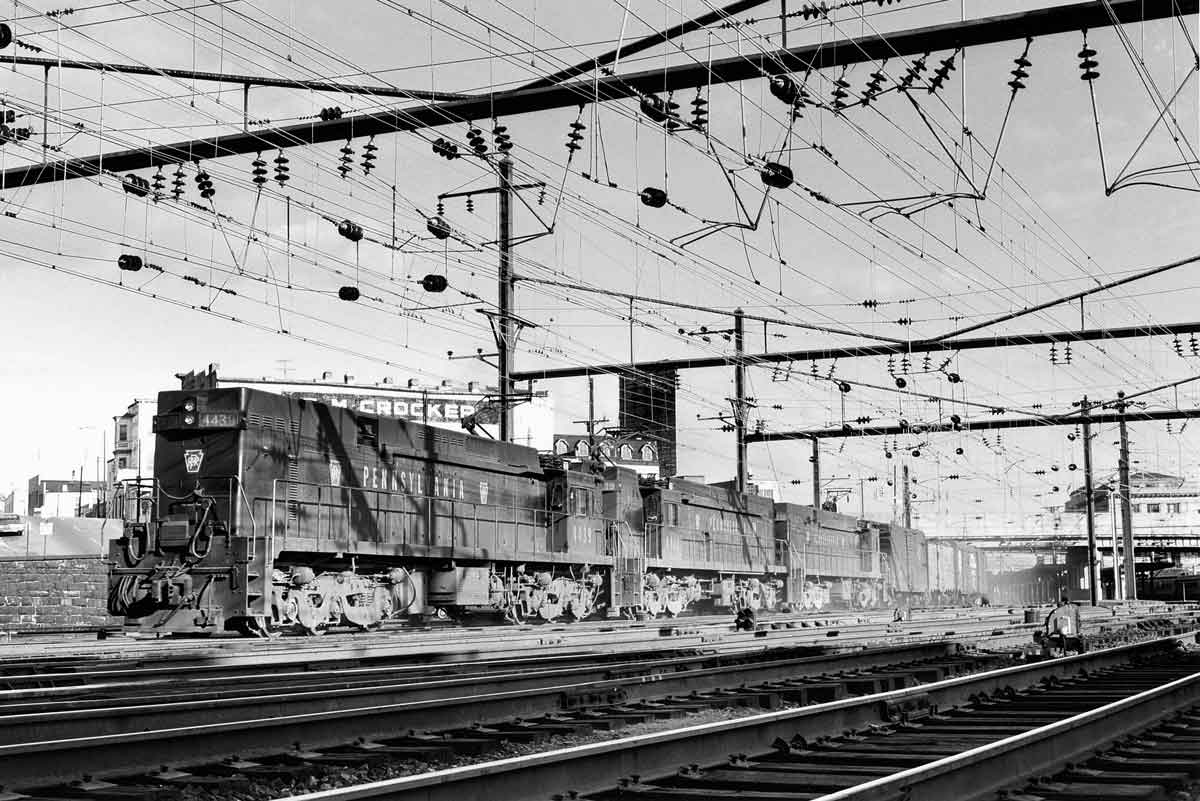
E44s at Baltimore
Three E44s pass the PRR station in Baltimore with a southbound freight in March 1966. GE built 66 E44 C-C road-switchers during 1960–63 using the rectifier technology proven by the Baldwin-Westinghouse cab units.
Herbert H. Harwood Jr. photo
Three E44s pass the PRR station in Baltimore with a southbound freight in March 1966. GE built 66 E44 C-C road-switchers during 1960–63 using the rectifier technology proven by the Baldwin-Westinghouse cab units.
Herbert H. Harwood Jr. photo







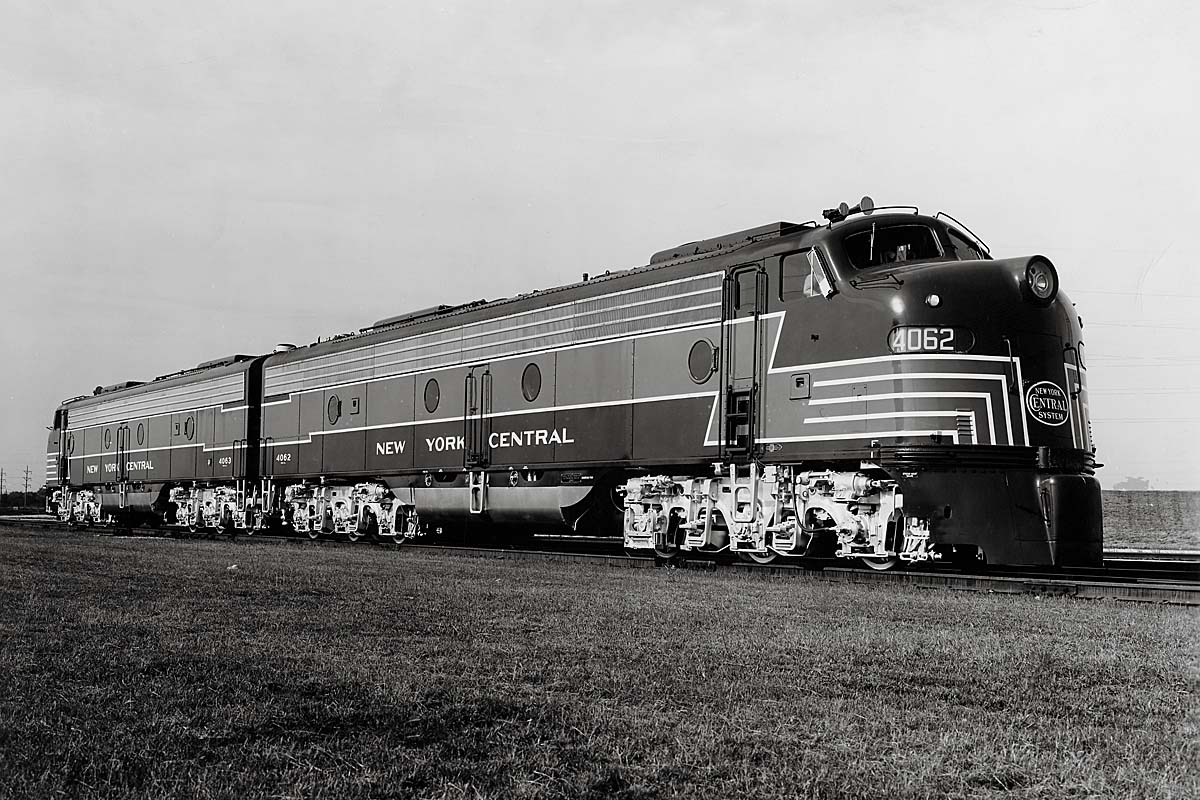
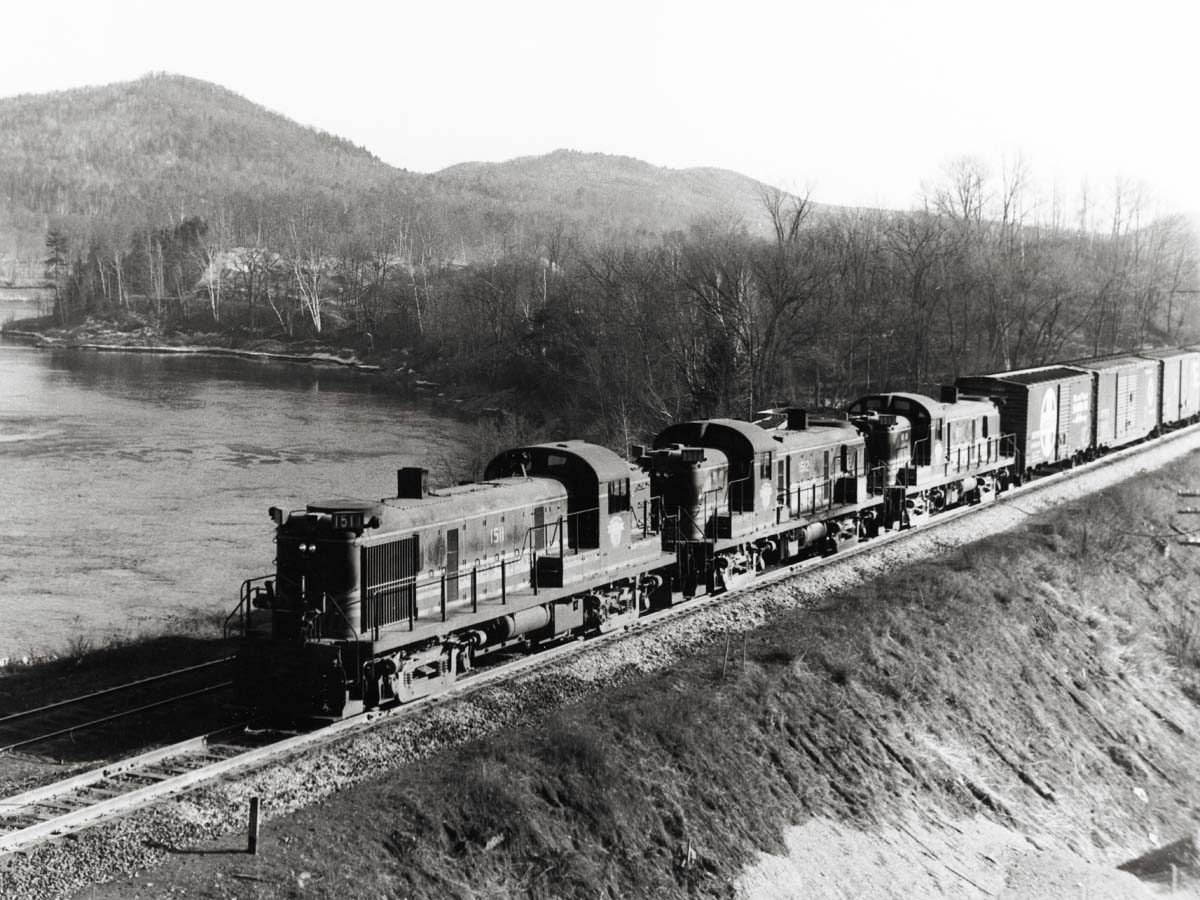
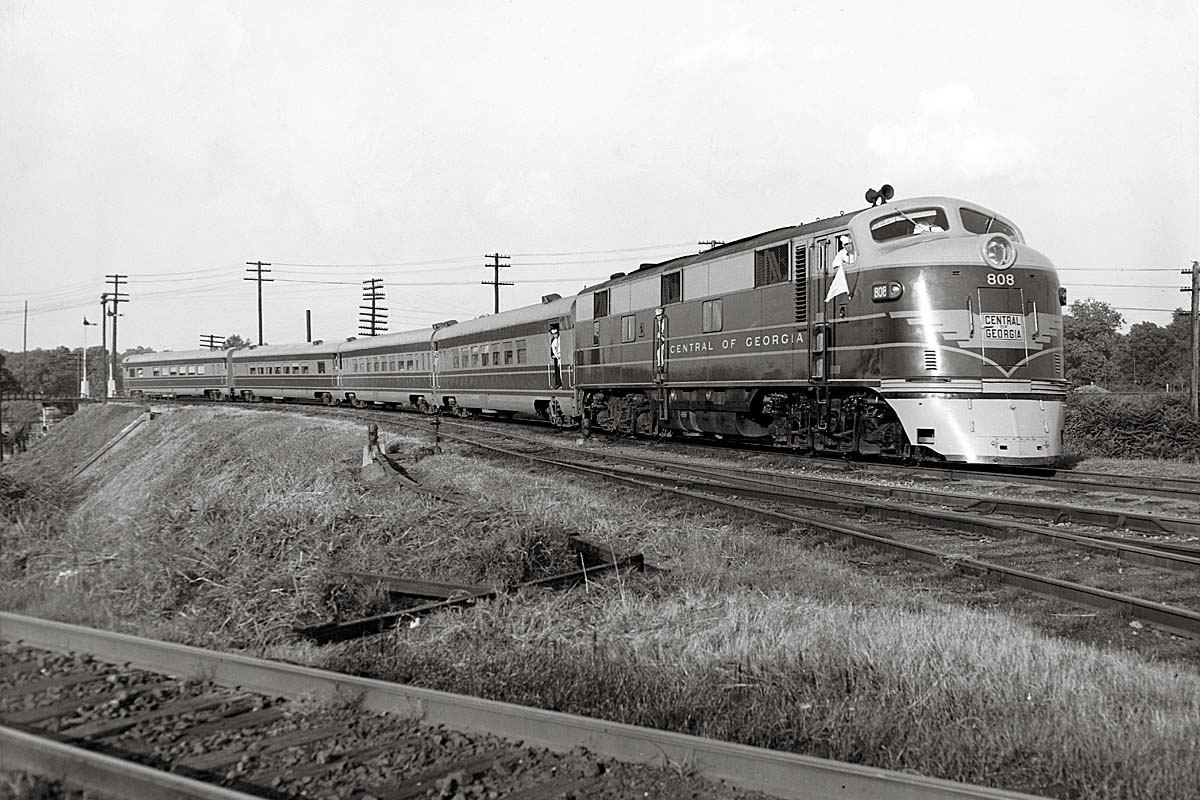
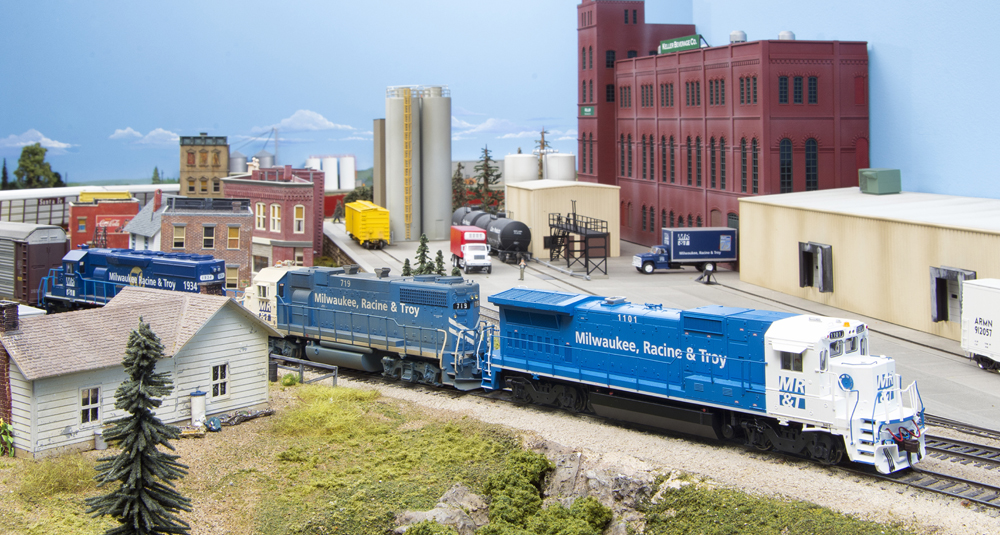




Not one color image, come on now